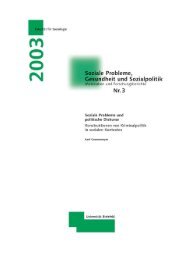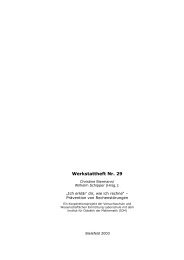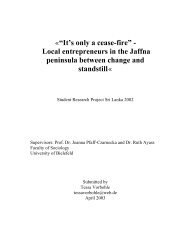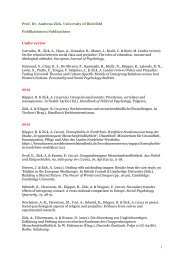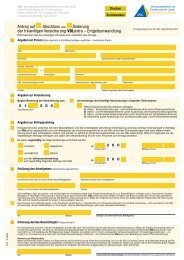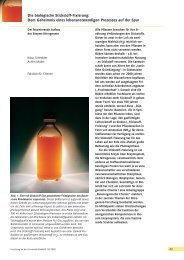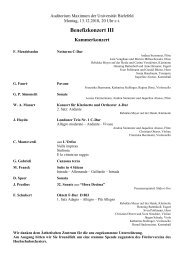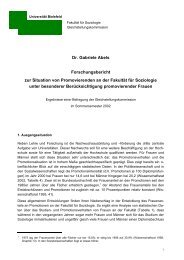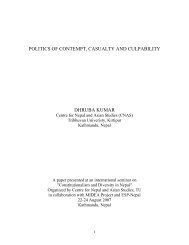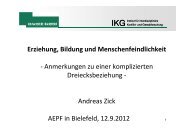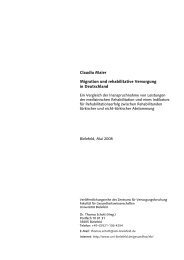Madheshi Nationalism and Restructuring the Nepali State
Madheshi Nationalism and Restructuring the Nepali State
Madheshi Nationalism and Restructuring the Nepali State
You also want an ePaper? Increase the reach of your titles
YUMPU automatically turns print PDFs into web optimized ePapers that Google loves.
praised this achievement: “It gives Madhesh a separate identity; it produces federalism; it<br />
compels <strong>the</strong> state to increase representation of <strong>the</strong> Madhesh in <strong>the</strong> state apparatus; it helps<br />
<strong>Madheshi</strong>s to get citizenship card without much pain; <strong>and</strong> above all it boosts up morale <strong>and</strong><br />
confidence of <strong>the</strong> <strong>Madheshi</strong> people.” 1 Below is an excerpt of a direct observation report from 16<br />
to 26 January 2007 on <strong>the</strong> Madhesh uprising in Janakpur city of Dhanusha district. 2<br />
Madhesh b<strong>and</strong>h (general strike) was called by <strong>the</strong> <strong>Madheshi</strong> Janadhikar Forum (MJF), backed<br />
by <strong>the</strong> Tarai Jantantrik Mukti Morcha (TJMM) of both factions (Goait <strong>and</strong> Jwala Singh) <strong>and</strong><br />
participated in by workers of <strong>the</strong> Nepal Sadbhavana Party (NSP). Most of <strong>the</strong> demonstrators<br />
were from <strong>the</strong> age group of 12-25 <strong>and</strong> <strong>the</strong> number of demonstrators increased almost double in<br />
every next day. Schools along with shops were closed; <strong>the</strong> movement of all forms of<br />
transportation was disallowed <strong>and</strong> those attempting to defy <strong>the</strong> ban were destroyed or burnt.<br />
Demonstrators carried out <strong>the</strong> sticks <strong>and</strong> organized masal (torch) rally every evening. Tyre<br />
burning took place at every corner of <strong>the</strong> city. Police deployed were mostly <strong>Madheshi</strong>s <strong>and</strong><br />
<strong>the</strong>ir actions sometimes went to <strong>the</strong> extent of firing but <strong>the</strong>y failed to control <strong>the</strong> situation.<br />
Instead, <strong>the</strong> protesters defied <strong>the</strong> curfew <strong>and</strong> burnt government offices, banks <strong>and</strong> some private<br />
properties. A copy of <strong>the</strong> Interim Constitution was burnt every day.<br />
The local leaders of each of <strong>the</strong> Seven Party Alliance (SPA) attempted to counter <strong>the</strong> protests<br />
by organizing sadbhav (harmony) rallies occasionally; but <strong>the</strong>se were not effective. Despite<br />
being <strong>Madheshi</strong>s, <strong>the</strong>y were blamed as <strong>the</strong> stooges of <strong>the</strong> ‘hill rulers’. They avoided appearing<br />
in public places whenever street protest occurred. When <strong>the</strong> local cadres of <strong>the</strong> CPN (Maoist)<br />
once countered some MJF cadres with physical violence, its office building was attacked <strong>the</strong><br />
next day by <strong>the</strong> protesters of a big rally. The local leaders of all <strong>the</strong> mainstream parties seemed<br />
to be in a dilemma. On <strong>the</strong> one h<strong>and</strong>, <strong>the</strong>y suspected <strong>the</strong> role of reactionary elements in making<br />
<strong>the</strong> movement violent <strong>and</strong> destructive; on <strong>the</strong> o<strong>the</strong>r h<strong>and</strong>, <strong>the</strong>y endorsed almost all <strong>the</strong> dem<strong>and</strong>s<br />
of <strong>the</strong> MJF. Consequently, <strong>the</strong>y nei<strong>the</strong>r resisted nor participated in <strong>the</strong> Madhesh movement.<br />
‘Pahadis out of Madhesh’ <strong>and</strong> ‘down with hill administration’ were <strong>the</strong> main slogans chanted<br />
in <strong>the</strong> rally. Some shops <strong>and</strong> a hotel run by Pahadi people were destroyed <strong>and</strong> burnt. None of<br />
<strong>the</strong> Pahadis were seen on <strong>the</strong> street (though <strong>the</strong>y constitute one-fifth of <strong>the</strong> Janakpur city<br />
population) throughout <strong>the</strong> days of Madhesh b<strong>and</strong>h. In a public speech organized at <strong>the</strong> end of<br />
<strong>the</strong> day – which was everyday programme – speakers stressed <strong>the</strong> following dem<strong>and</strong>s:<br />
abrogation of <strong>the</strong> Interim Constitution, declaration of federalism, census before <strong>the</strong> election of<br />
Constituent Assembly, delimitation of electoral constituencies on <strong>the</strong> basis of population,<br />
inclusion of <strong>Madheshi</strong>s in <strong>the</strong> state apparatus.<br />
The observation report exhibits multiplicity of <strong>the</strong> Madhesh movement. It is a clear sign of <strong>the</strong><br />
rise of <strong>the</strong> <strong>Madheshi</strong> nationalism associated with assertion for <strong>the</strong> <strong>Madheshi</strong> identity; it is<br />
temperamentally anti-hills so contributing to Pahadi-<strong>Madheshi</strong> tension; it is a manifestation of<br />
discontent against <strong>the</strong> systematic exclusion of <strong>the</strong> Madhesh by <strong>the</strong> state <strong>and</strong> also a quest for<br />
inclusion of <strong>the</strong> <strong>Madheshi</strong>s in many forms, by <strong>the</strong> establishment of federalism in particular. It is<br />
also a deterrence against <strong>the</strong> emerging trend of left dominance in national politics in general <strong>and</strong><br />
against <strong>the</strong> CPN (Maoist)’s aggressive campaign of party building in particular.<br />
1 He expressed <strong>the</strong>se views while giving his speech as a resource person on one-day discussion programme on<br />
“<strong>Restructuring</strong> <strong>the</strong> <strong>Nepali</strong> <strong>State</strong> <strong>and</strong> Madhesh“ on 19 April 2007, organized in Janakpur by <strong>State</strong> of Democracy<br />
in South Asia, Nepal Chapter.<br />
2 From an observation report prepared by Lal Babu Yadav, a researcher of a study team on “Interface Between<br />
<strong>State</strong> <strong>and</strong> Ethnicity“‚ headed by <strong>the</strong> author of this paper.<br />
3



